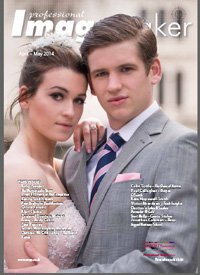articles/Qualifications/laf-page2
Fellowship - Associateship - Licentiateship Technical Quality Requirements - part 2 of 1 2 3 4 5 6 7 8 9 10 11 12 13 14
by Tom Lee Published 01/04/2014
1. Rushing is the over-arching enemy; compilation of a panel is left right up to the last moment with no leeway to make any changes. Seeing a panel for the first time on the morning of the adjudication is not the time to find out that all is not well.
2. The panel should be viewed as a whole in the correct lighting despite the difficulty of finding enough space and time to do so - that is a problem the applicant has to solve.
3. The adjudicators spend about 45 minutes assessing a panel at Fellowship level during which time every print will be individually viewed on a daylight-corrected light stand. That is almost four man-hours of examination under searching conditions - applicants should ask themselves if they have spent the equivalent time looking; successful and mentored applicants usually have!
4. The prints will have warmed and cooled many times before they are set up on the viewing boards. You have to be certain that they are going to both be flat and remain flat under those circumstances and certainly not fall apart (some have). Some prints are so bowed that they can hardly remain in place with velcro; they certainly look poor if they are glossy and being viewed in the top-lit light booth. You should test your entire workflow/production process - cockled prints are unacceptable commercially so why should you expect a qualifications panel to look favourably upon them?
5. Prints should be matted with neat, accurate window mounts both to protect the print and to set it off. The aperture should be truly rectangular and in particular the cut lines should be straight and the corners neat.
Print Quality How do you encapsulate all that goes into making a flawless quality print in an article of this length - whole books have been written on the subject (see call out). However, you need to do whatever it takes, which might include buying the book, buying an Epson 3880 (or larger) or moving into the laboratory premises for the duration! One thing is sure; you do not 'knock off' a Fellowship panel over a Saturday afternoon, the week before the Convention!
So what is it that makes a high-quality, indeed 'flawless' print? It is easier to break things down into categories, some of which can be measured, some not. It is important to attend to your printing craft ahead of preparing your own images and we assume here that you are using an inkjet printer. You can expect all 'professional printers' in the Epson range (that is the 3880 upwards - the so-called large-format graphic printers) to reproduce at great consistency, so good that you should expect to remake a damaged print and have it fit back into a panel without any problem. Naturally you should use the same paper, ink, printer and settings for the entire panel.
Please Note:
There is more than one page for this Article.
You are currently on page 2
- Fellowship - Associateship - Licentiateship Technical Quality Requirements page 1
- Fellowship - Associateship - Licentiateship Technical Quality Requirements page 2
- Fellowship - Associateship - Licentiateship Technical Quality Requirements page 3
- Fellowship - Associateship - Licentiateship Technical Quality Requirements page 4
- Fellowship - Associateship - Licentiateship Technical Quality Requirements page 5
- Fellowship - Associateship - Licentiateship Technical Quality Requirements page 6
- Fellowship - Associateship - Licentiateship Technical Quality Requirements page 7
- Fellowship - Associateship - Licentiateship Technical Quality Requirements page 8
- Fellowship - Associateship - Licentiateship Technical Quality Requirements page 9
- Fellowship - Associateship - Licentiateship Technical Quality Requirements page 10
- Fellowship - Associateship - Licentiateship Technical Quality Requirements page 11
- Fellowship - Associateship - Licentiateship Technical Quality Requirements page 12
- Fellowship - Associateship - Licentiateship Technical Quality Requirements page 13
- Fellowship - Associateship - Licentiateship Technical Quality Requirements page 14
1st Published 01/04/2014
last update 09/12/2022 14:55:36
More Qualifications Articles
There are 16 days to get ready for The Society of Photographers Convention and Trade Show at The Novotel London West, Hammersmith ...
which starts on Wednesday 14th January 2026





